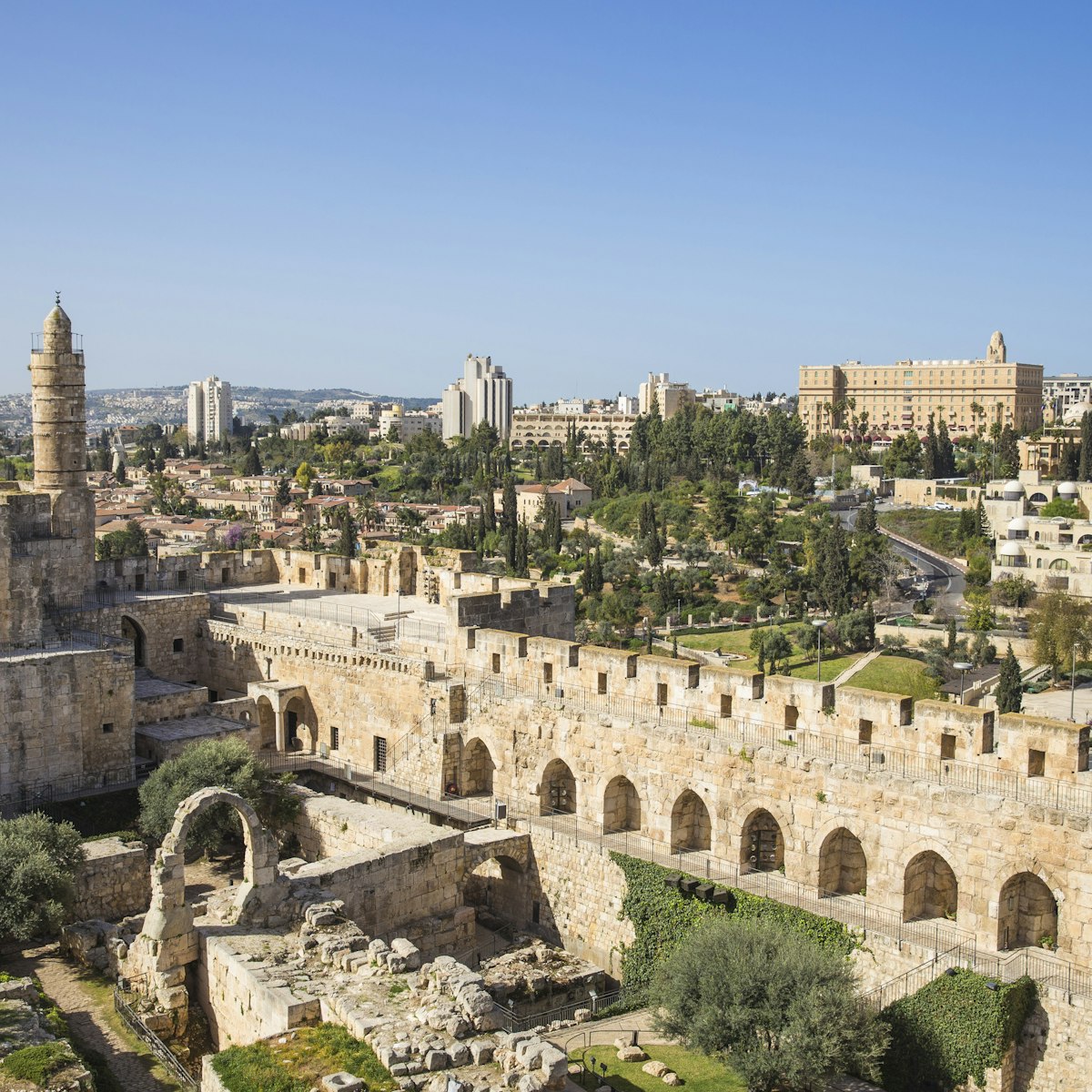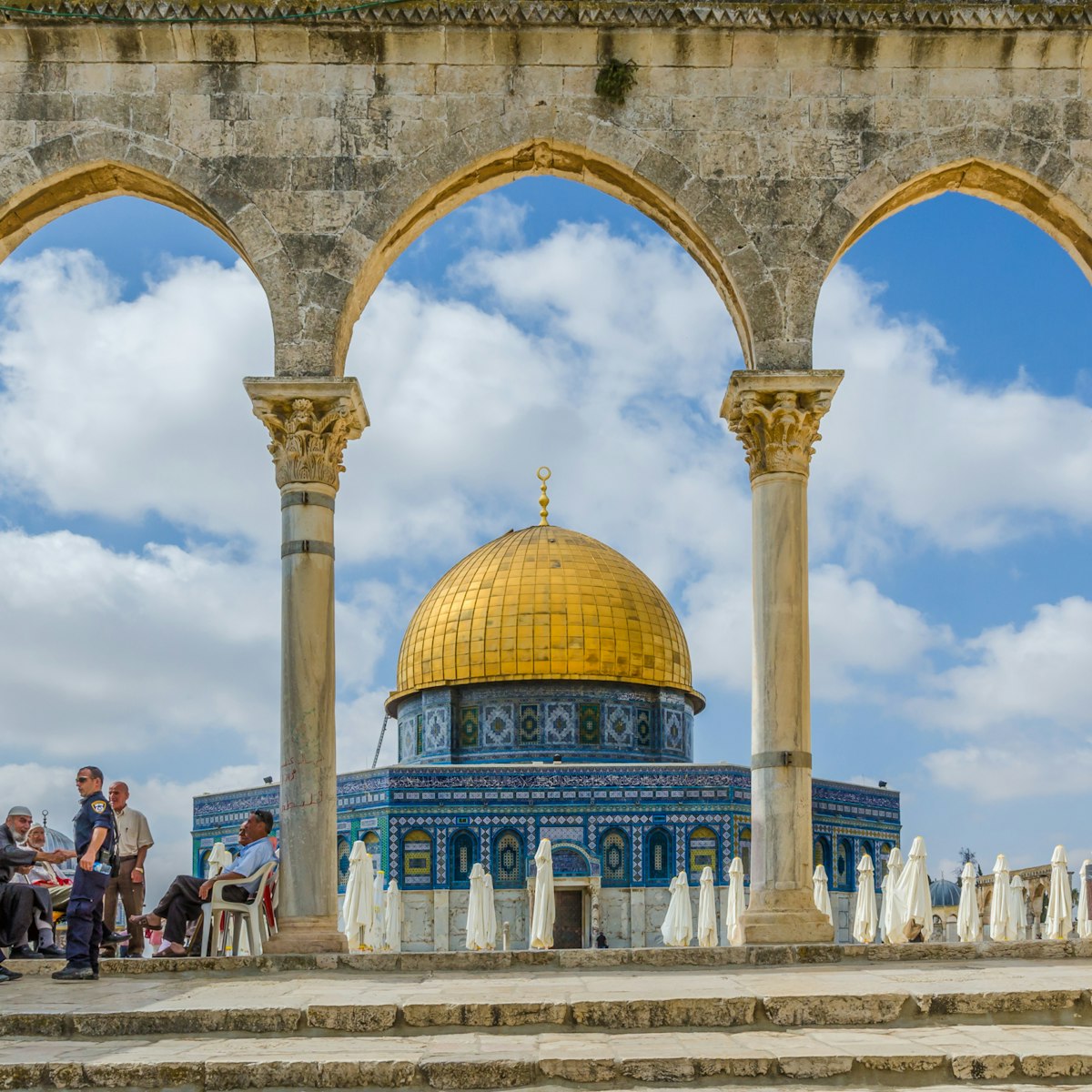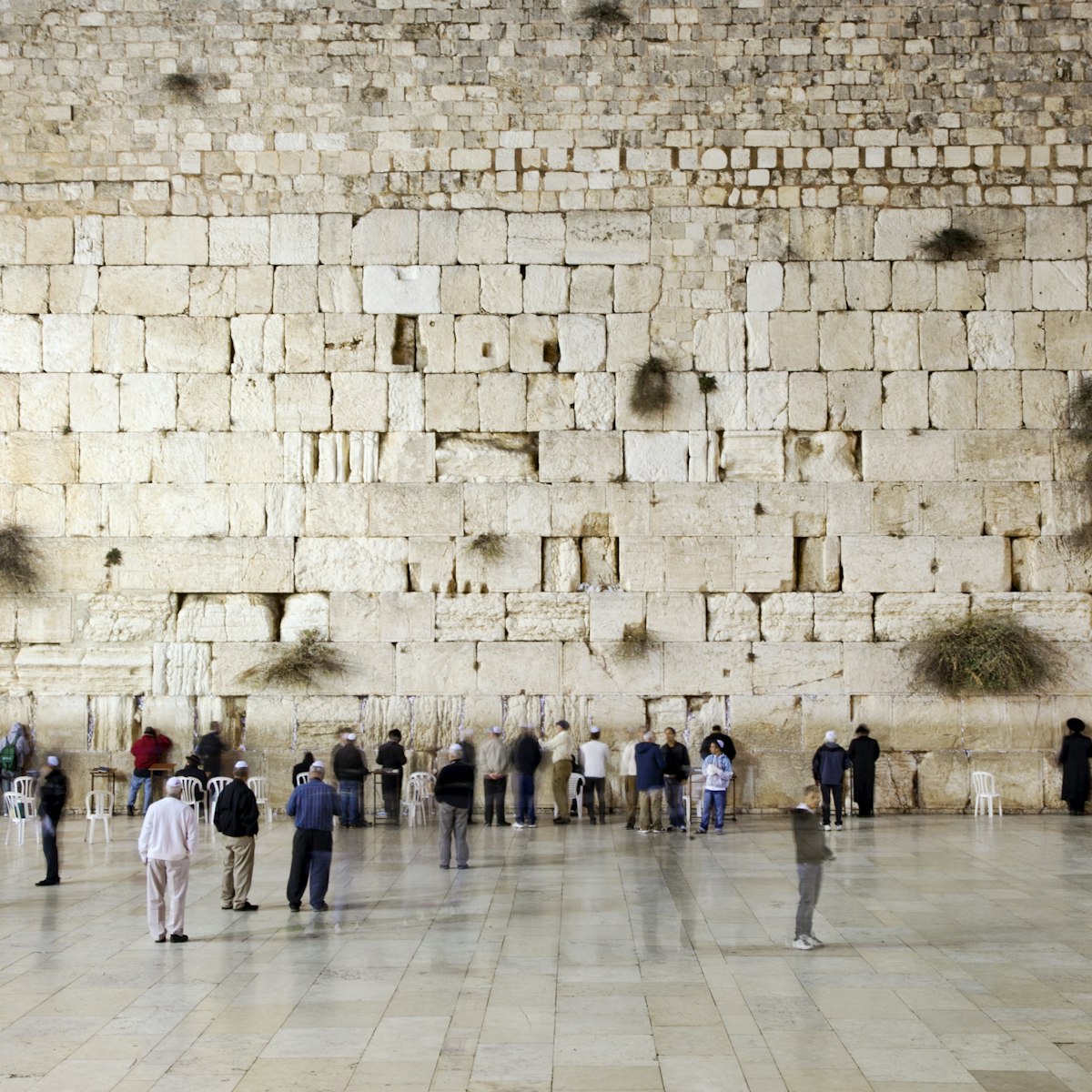The sights and sounds of the Muslim Quarter intensify on the approach to Damascus Gate, on the northern wall of the Old City. The gate's triangular crenellations give it the appearance of a crown; for the best view, walk through the gate to a small stone plaza, surveyed by armed Israeli soldiers, facing Derekh Shchem (Nablus) Rd.
The gate's present form dates from the time of Suleiman the Magnificent, although there had been a gate here long before the arrival of the Turks. This was the main entrance to the city as early as the time of Agrippa, who ruled in the 1st century BCE. The gate was considerably enlarged during the reign of the Roman emperor Hadrian. Excavations in the 1960s revealed the remains of a triple-arched Roman gate.
A long-disappeared column erected by Hadrian once stood in the square, which is why the gate is known in Arabic as Bab Al Amud (Gate of the Column). In Hebrew it is known as Sha’ar Shchem (Damascus Gate).
Today it's a fascinating place to people-watch. Vendors catcall their wares to passers-by, locals and tourists barter over products from vegetables to SIM cards, and elderly Palestinian women dart in and out of the gate with surprising speed.








